Hawks in Ohio
Hawks are large, soaring birds with powerful hooked beaks, long tails with ragged edges, and very broad wings. Hawks are found in most parts of the world except the polar regions and Ohio is no exception. Most hawk species will hunt small to medium sized animals like rodents and insects; however some will also eat fruits and even carrion.
If you live in or near Ohio, you’ll be thrilled to know that a few different types of hawks call this state home. The Coopers and Red-tailed hawks, which often share their territory and prey, and the Sharp shinned hawk all inhabit Ohio.
Table of Contents
Sharp-shinned Hawk
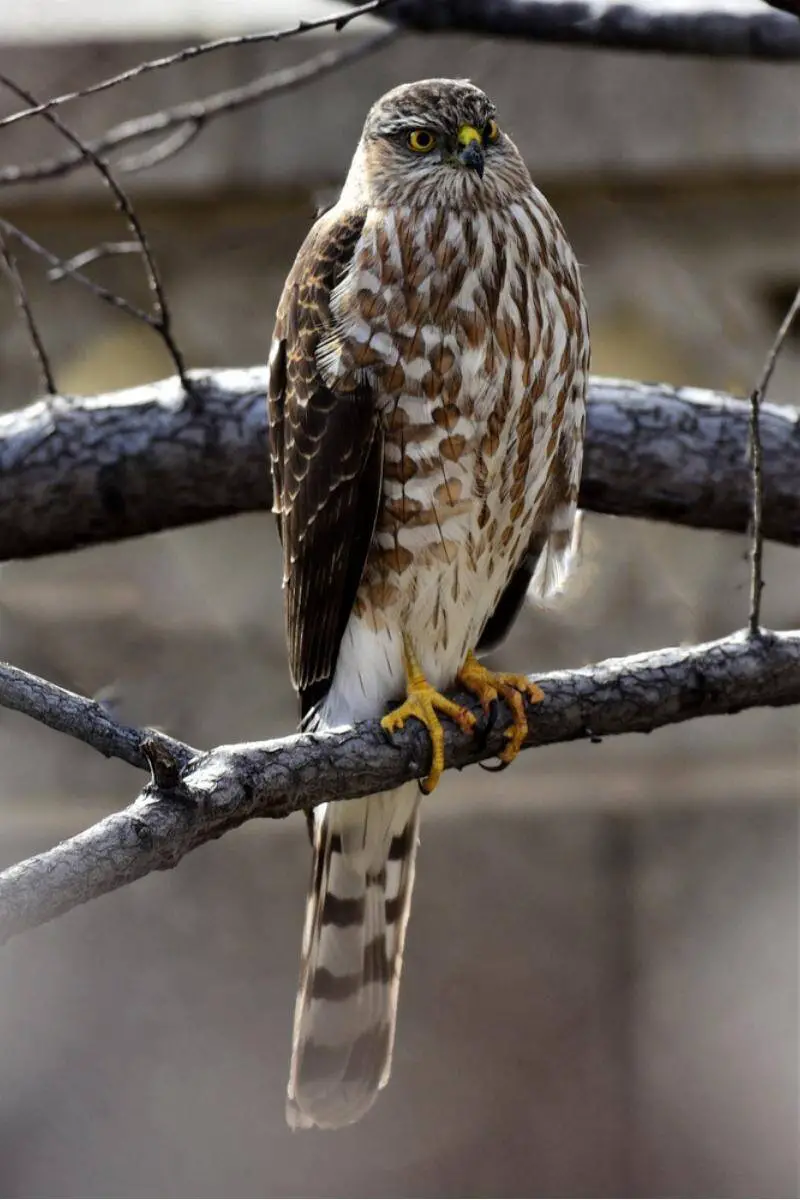
Sharp-shinned Hawks are tiny and lengthy raptors. These hawks have curved feathers, short tails that are usually square-tipped with a groove near the tip, and short heads that don’t generally extend further than the “forearm” of the wings when flying. The females are much bigger compared to males. Adult Sharp-Shinned hawks have slender, straight red-orange stripes on their chest and are slaty blue-gray on the upper side.
The young ones are predominantly brown, having white undersides with rough vertical stripes. However, both the adults and the young possess broad black stripes running down the extent of their lengthy tails. Sharp-shinned Hawks are quick fliers who dart across thick woodlands to catch their food, usually songbirds, off guard. These hawks don’t descend to catch prey from a great height.
However, they can also attack at lower vantage points with a characteristic flap-and-glide movement technique when soaring through wide spaces. Their main targets are usually tiny birds and mammals around woodland margins and, other times, bird feeders found in homes. These birds prefer to nest in densely forested areas. Often, you can search for and find them in open environments or up in the skies, as they travel across mountain ridges, all through migrations.
Broad-Winged Hawk
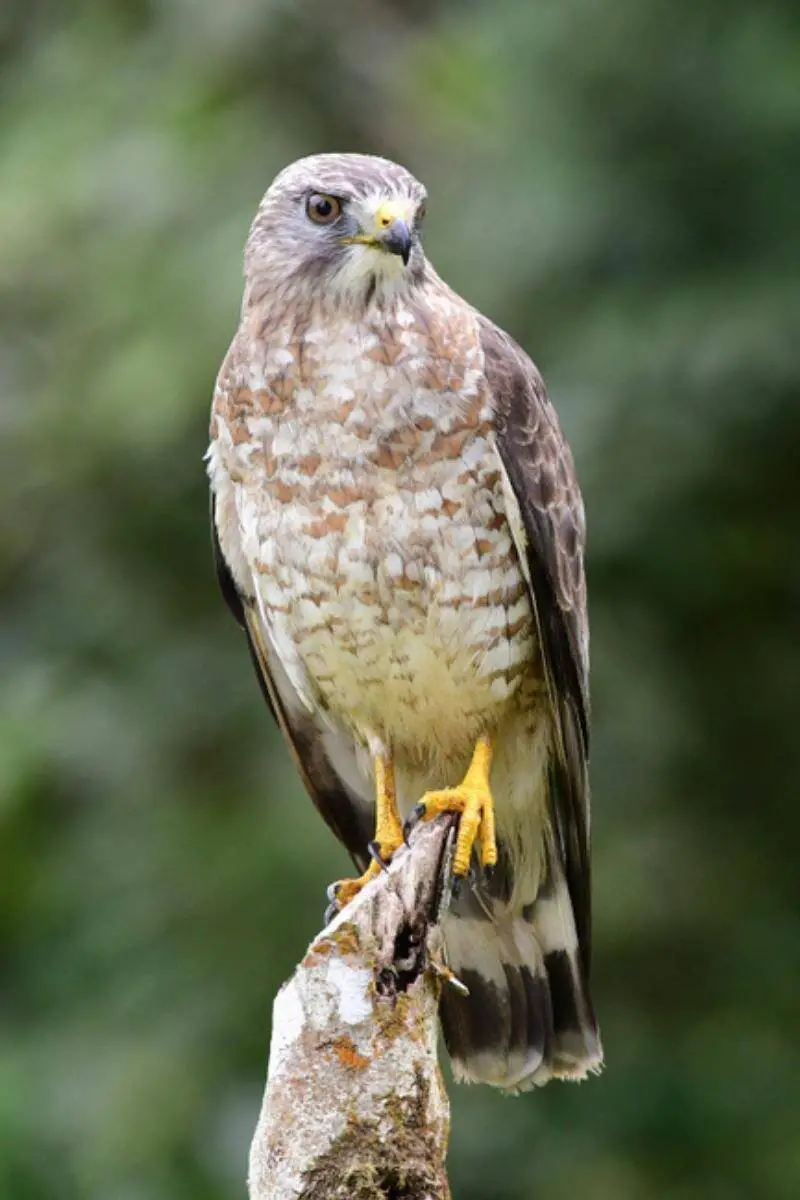
Broad- Winged hawks are medium-sized hawks with big heads and hefty frames. Females are considerably greater in size, as is the case with most birds of prey. Broad- Winged hawks are forest dwellers who spend most of their time under tree canopies. Occasionally, they glide over the treetops or across openings on the road with their wide wings tapering to a sharp tip when flying. These hawks are known to glide over beaches and slopes during migration, frequently in big groups.
When they reach reproductive age, usually around two years old, they begin breeding. During the mating season, the species just have a single partner, probably because the male additionally assists with the upbringing of the young in some way. The mother usually provides the majority of parental support in the brood, guarding and feeding the chicks. The male might bring food to the female and her children, but his trips are typically brief. The Chicks’ development occurs very quickly. A nearly fully grown chick is strong enough to move around, soar, and feed on its own.
Broad-winged hawks are carnivores who pursue young animals in positions beneath the treetops. During the summertime or breeding period, the adults and their young consume small animals and feed on crabs, insects, and other tiny animals in the wintertime.
Broad- Winged hawks seldom consume water and can live exclusively on the fluid that their victim provides. Broad- Winged hawks utilize their typical solitary sharp whistling sounds to communicate to their partners and young ones and mark their territory to invaders like red-tailed hawks and other harmful creatures.
Red-Tailed Hawk
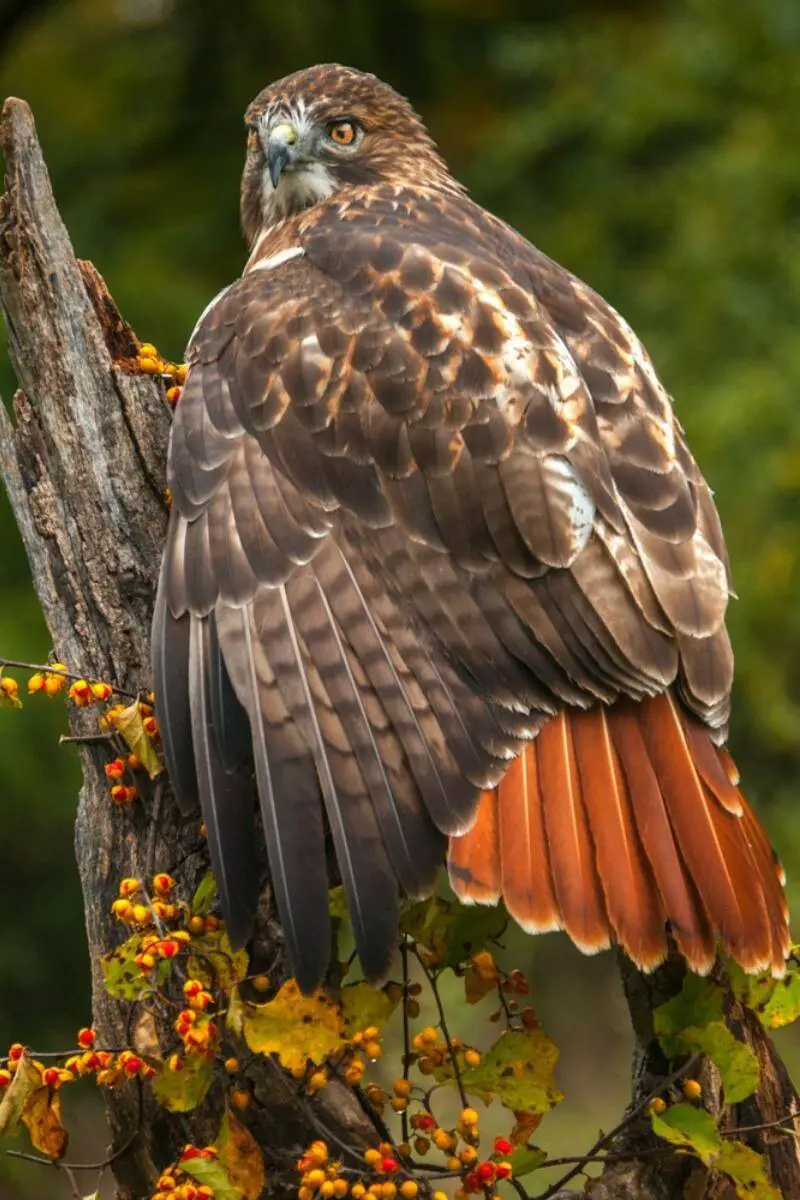
The Red-Tailed Hawk is the most prevalent in North America, at about 2 million, and dwells in Ohio all year. Red-tailed Hawks prefer open regions and plains and can be spotted gliding over vast areas, with their large, rounded wings leisurely forming circles. Sometimes, they can be seen perched on power lines, sight fixed on the earth, watching for a vole or a rabbit to pass, or simply waiting out the cold before attempting to climb a warm airstream into the sky.
These hawks have even taken to living in human-made environments. The Red-Tailed Hawks have a reputation for being mighty flyers with a consistent and elevated soar. Because they fly so highly, their sight must be razor-sharp for them to notice the little rodents and mammals they scavenge for below. On practically any long automobile trip, anyplace, if you have sharp eyes, you’ll notice Red-Tailed Hawk in plenty. The glossy brown neck and head of these hawks lend the appearance of donning a cloak.
Their throat is a brownish color that resembles a necklace with light underbellies with dark markings everywhere. While their brick-red tails are well-known, not all subspecies of the Red-Tailed Hawk have them. When mating, males and females fly in high circles with piercing shouts. The male Red-tailed Hawks have been known to soar overhead and then plunge continuously in stunning acrobatics; as they seize food and deliver it to females while in flight. The location of the brood varies from season to season.
Red-Shouldered Hawk
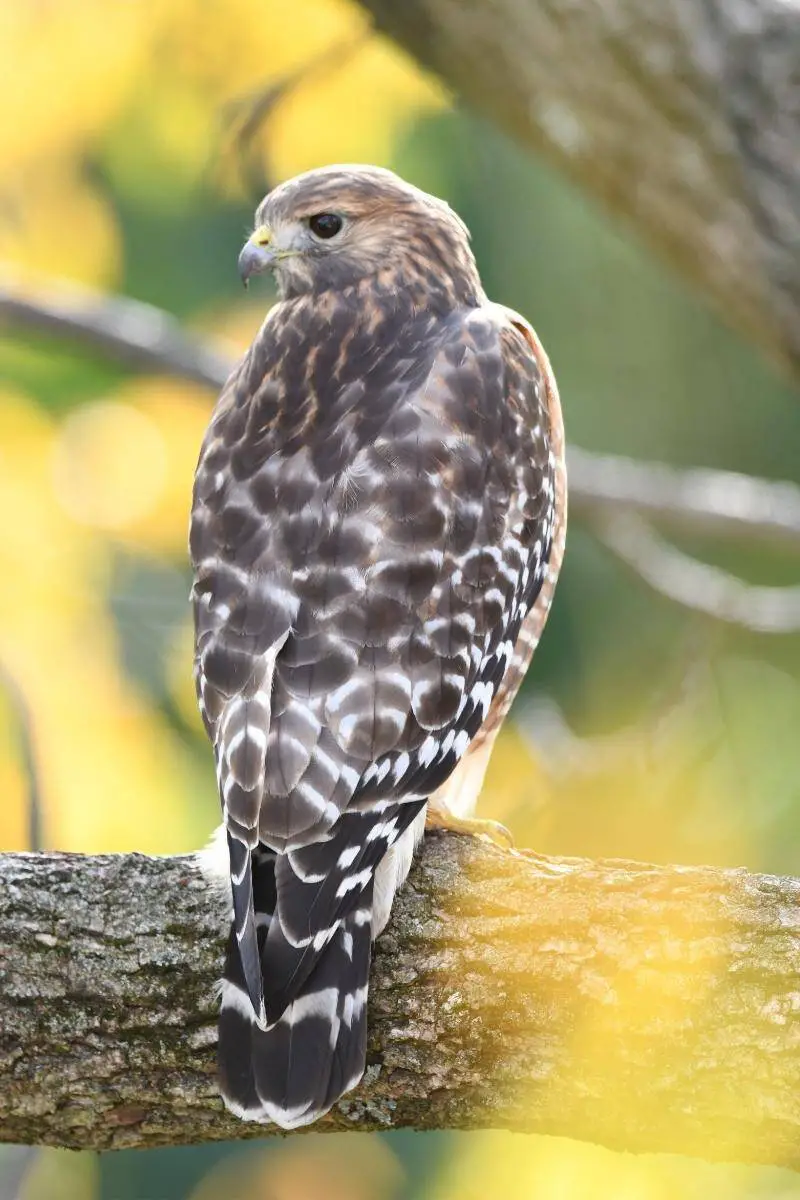
Much of Ohio, and a large part of the eastern portion of the United States, is home to the Red-shouldered Hawk all year. Red-shouldered Hawks are medium-sized hawks with heads that are weathered brown and red chests and wings. Their bellies are lighter in color, and they have a long, white-barred tail. This hawk soars with its flattened wings in front but glides with its wings cupped. Their slumped posture is due to their cupped wings.
The Red-shouldered Hawk has the most extended tail in proportion to its body length of all the hawks found in Ohio. They prefer to live and breed in jungles and forested places. This hawk’s distinct whistled sounds are noticeable, more so in the springtime as they have established a reputation of being North America’s noisiest hawks. Red-shouldered Hawks usually hunt by keeping an eye on their target from a high point, either in the woodland or out in the open, then diving downwards whenever it spots it.
To locate prey, it may use both hearing and vision. Small animals, other avians, reptiles, and amphibians are their main sources of food. These hawks are also recognized to hoard food in their nests once they are satiated. Red-shouldered Hawks nest in North America and frequently use the same nest season after season. Females are responsible for the majority of the incubation, which takes about 33 days. On the other hand, males give food to the female at the nest, and he might perch on the eggs as she feeds.
Northern Goshawk

The Northern Goshawk is a huge hawk with a distinctive look and falls under the raptor family. Despite being huge, their wings are short yet expansive, and they have a long tail, which is typical of this species. They come in two colors: dark and light and are usually covered in a pale grey. Adults have a faint streak across their eyes and are dark slate gray atop with streaked light gray undersides.
Northern Goshawks inhabit and breed in densely forested areas, rendering them hard to detect. These hawks aren’t discriminating eaters as they will consume a variety of prey, such as other birds, mammals, carrion, and insects, and are often opportunistic feeders. They’re not easily seen in Ohio, although they can be discovered around Lake Erie in the northern part of the state and during wintertime. These raptors do not reproduce in North America; they breed in Canada, north of Ohio.
However, they will occasionally travel far south, but only in rare instances and can be seen in the mountainsides in the fall season. Northern Goshawks are acoustic birds that only make noise when wooing or breeding. They’re also notorious for being ferocious pursuers, frequently slamming into shrubs or trees while pursuing their target at fast speeds.
Rough-Legged Hawks
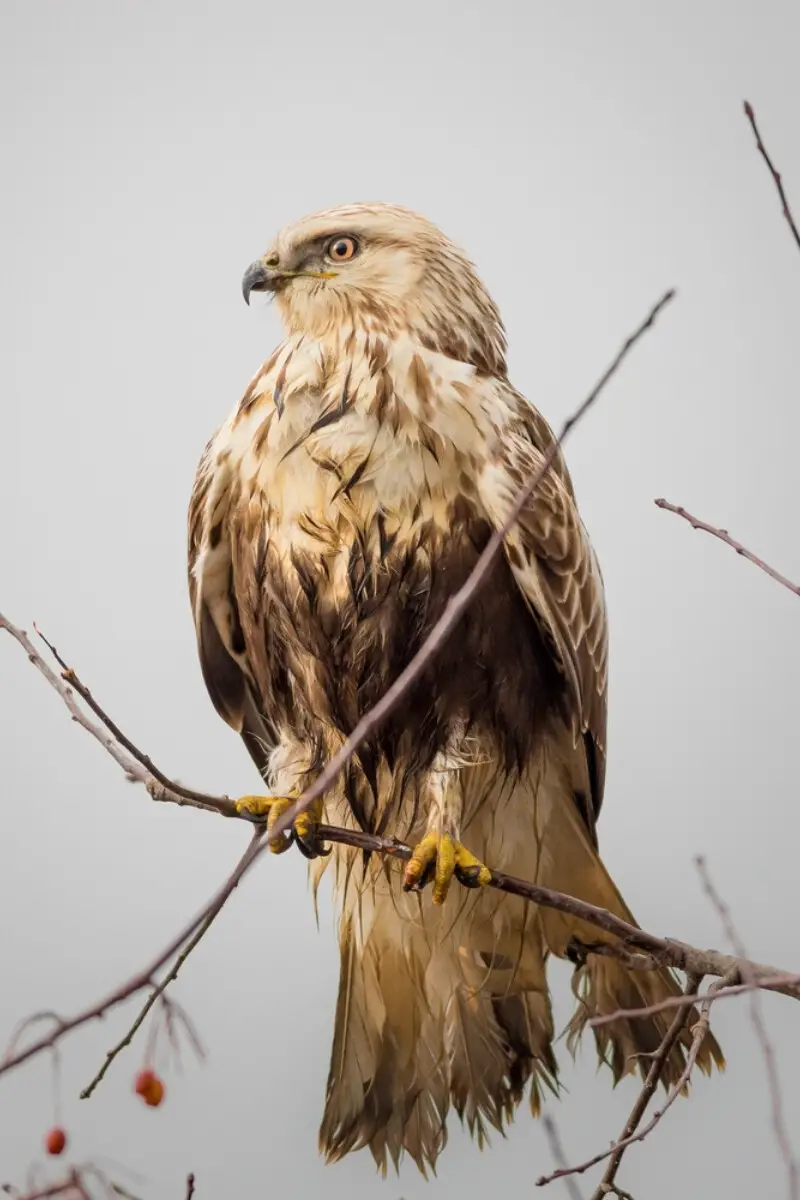
Rough-legged Hawks are not native to Ohio; they only visit during the colder months when traveling south from their nesting grounds as a migratory stopover. These bulky, huge hawks can be seen in open places. Rough-legged Hawks species have two color variants: light morph and dark morph, with males and females having distinct feathers in both forms. Light variants have a lighter general color with a speckled pattern.
In contrast, dark morphs are dark chocolate brown with double-toned light/dark beneath their feathers and tails. Contrary to many other hawks, Rough-legged Hawks have plumes down to their toes, allowing them to stay warm in the chilly settings. Since they breed in the Arctic, the increased feathering on their legs is essential to maintain warmth in the bitter weather. Rough-legged Hawks are distinguished from other hawks of their size by the absence of a white edge on their tail wings.
They are also the only raptors that like to remain in the same location over and over. Hawks of this species can be found across Europe, Russia, and the Palearctic. They have a characteristic slurred whistle that they frequently employ as a warning cry and tiny claws, which may indicate that they prefer to hunt smaller animals.
Cooper’s Hawk
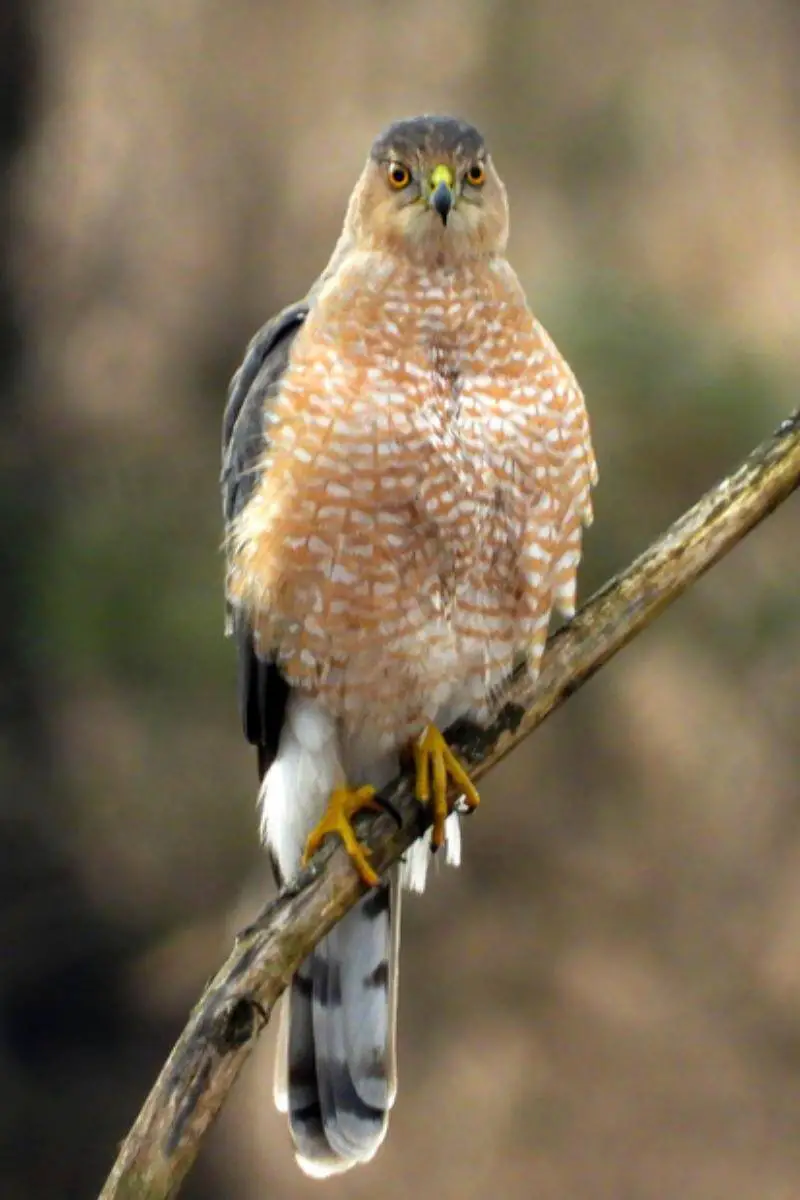
Cooper’s Hawk can be observed in Ohio year-round and can be spotted in every part of the state. A Cooper’s Hawk has a striking resemblance to the Sharp-shinned Hawk. The head of a Cooper’s Hawk is square, with rounded eyes that are light orange or red in hue and a thick beak curved at the tip. Their body is grey with a tinge of blue or brown, a lighter underbelly, and a well-defined dark brown plumage. Male Cooper’s Hawks are much smaller than females, as is the case with most hawks, and have difficulty surviving.
Unlike most other species, males are more subservient to females and usually set up the nest. The males have also attuned themselves to recognize the call sounds made by females when they are willing to be pursued. During breeding periods, the male Cooper’s Hawk provides nearly all of the meals to the females and chicks for about 90 days until the young reach maturity. Although Cooper’s Hawks have a wide variety of habitats, they prefer forest regions. Their quick wing motions make them agile in flight, allowing them to effortlessly soar through densely forested regions where bigger, less nimble hawks could struggle.
A Cooper’s Hawk catches a bird using its talons and squeezes it to death. Compared to falcons who bite their prey to death, Cooper’s Hawks keep their capture away from the body till death occurs. Female Cooper’s Hawks are particularly dangerous since they concentrate on eating medium-sized birds. They’ve even been reported to suffocate their target by submerging them until they cease fighting.
Northern Harrier

While the Northern Harrier can be found in Europe, Asia, and Africa, it is North America’s sole harrier out of 13 total varieties. The Northern Harrier has 3 unique plumages: the adult male is mostly light gray, the adult female is primarily light brown, and the juvenile is generally dark brown. While all the females have dark stripes at the bottom, adult males have black wing ends and are white at the bottom with mild rufous marking.
At close range, Ohio’s Northern Harrier’s face resembles that of an owl. Although they usually flap and drift, when migrating, the Northern Harrier soars, often at the height of treetops. The male usually soars lower and quicker than females, and they typically prey by swooping down over fields and examining the ground. When they detect prey in tight cover, the predator may linger low over the area or try and force the prey into the clear.
Unlike other hawks, it may depend on its acute hearing to detect food sources when it flies down over the plains. These harriers are some of the globe’s top skilled fliers; like the Turkey Vulture, it occasionally swings while flying. Northern Harrier species favor open environments, such as wetlands and meadows, and are known to nest collectively on the ground outside the mating periods, occasionally with Short-eared Owls.
Swainson’s Hawk
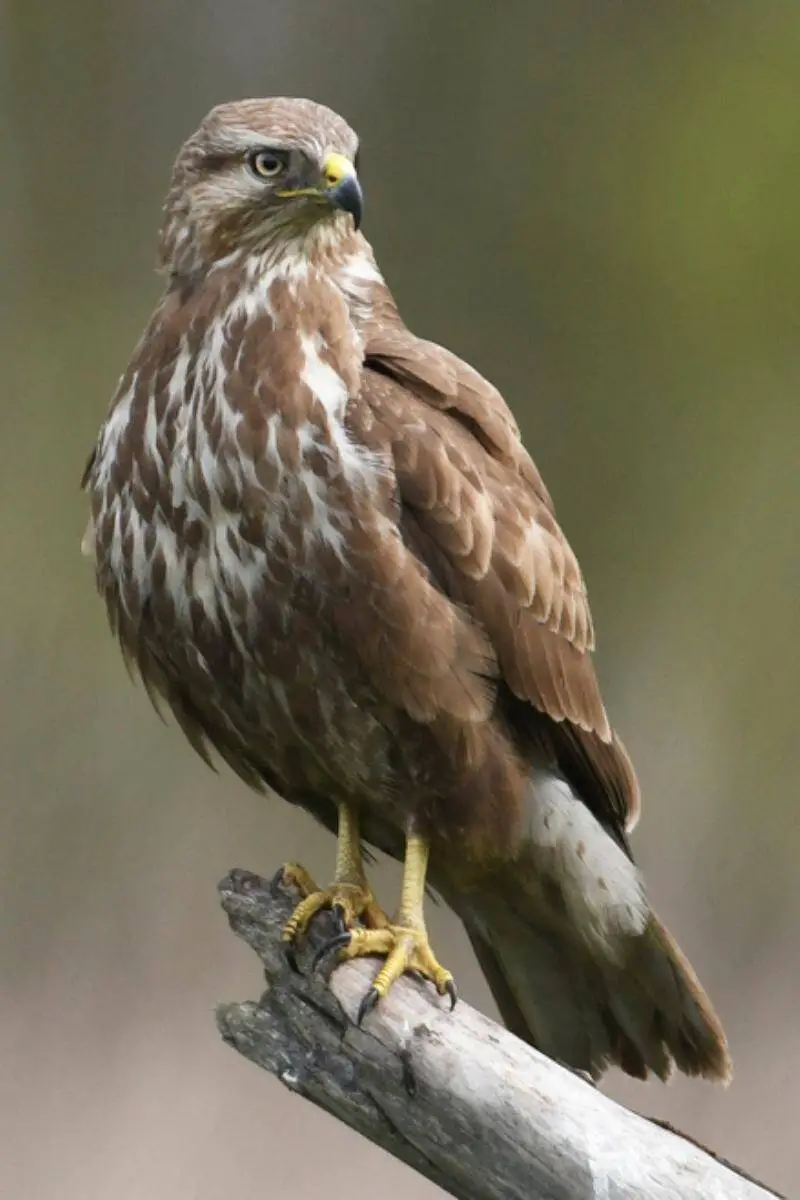
This sleek and elegant hawk can only be seen over the Great Plains and western meadows in the summertime. During the autumn season, most of these species move to southern South America. In Ohio, Swainson’s hawks are uncommon, and when spotted, they will most probably be searching for insects on the ground. These hawks have distinctive brown and white underparts with reddish breasts and a white patched neck and face.
Grey-brown bands run along the tail. During flight, Swainson’s hawks can be distinguished by their underwings, which have dark plumes and white inner wings. Primarily, Swainson’s Hawks feed on insects, even though they are big enough to eat rodents, snakes, and birds. However, they revert to a diet of smaller animals like bats, mice, and various snakes during mating seasons. These hawks have short feet compared to other raptors of comparable size.
Because of this, they only pursue small prey. Unlike other hawks too, both males and females feed the chicks, which explains their dietary change. Often, Swainson’s hawks drift through the air to capture insects, which they grab with their claws and shift them to their bills to consume mid-flight. They are also capable of catching prey as they move along the ground. During migrations, they move in huge groups and can travel over a couple of days without eating.
